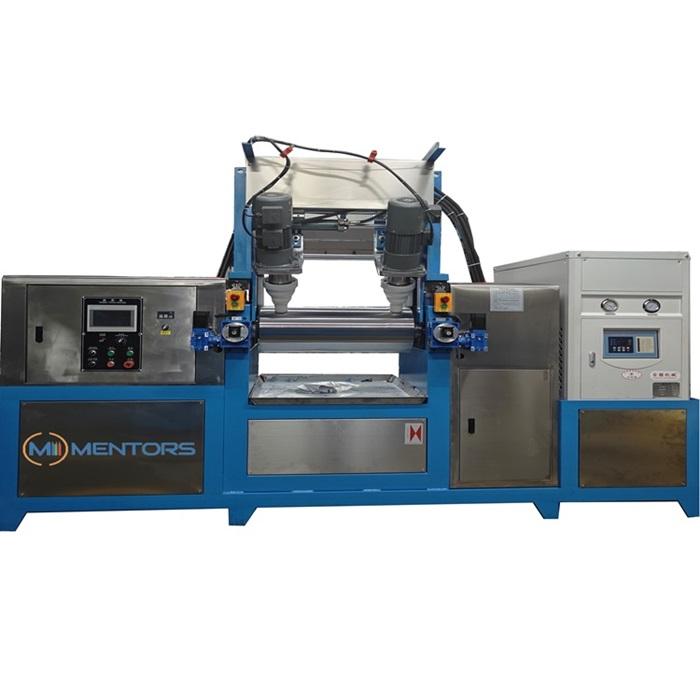The Rubber Mixing Mill is mainly used for mixing the half-finished silicone rubber. The mixed raw material can be used for silicone rubber extruder directly, which is an important process in insulating or sheathing wires.The following is the operation method of the Rubber Mixing Mill.

1. Break material
1.1 Before plasticizing, first break the rubber block, and this process is generally using an Rubber Mixing Mill.
1.2 The roller spacing for breaking the material is 1.5 to 2.0mm, slightly larger than plasticizing, and the roller temperature is 45 to 55℃.
1.3 The cut rubber blocks should be inserted between the two rollers at the end close to the large gear, with the tip facing down to facilitate the rollers to bite in.
1.4 When the material breaking is normal, the rubber is torn into thin strips and continuously dropped into the tray. After the material breaking is completed, plasticizing is carried out.
2. Thin pipe plasticizing
2.1 The main feature of thin pass plasticizing is that the roller spacing is very small (0.5 to 1.0mm).
2.2 After the rubber compound passes through the roller gap, it does not wrap around the roller but directly falls onto the tray.
2.3 The process is repeated only after all the rubber has passed through.
2.4 Repeat this several times until the desired plasticity is achieved.
2.5 When chemical plasticizers need to be added, they are generally added after 1 to 2 thin passes.
2.6 The advantages of thin pass plasticizing are that the rubber sheet has a good cooling effect, no cutter is needed, the plasticizing effect is excellent, the quality of the rubber compound is good, and it is suitable for various types of rubber.
2.7 Only by using thin pass plasticizing can relatively difficult-to-mix nitrile rubber achieve better results.
3. Roll plasticizing
3.1 Roller plasticizing involves adding crushed raw rubber to the Rubber mixture form roller coating rubber, which is then continuously rolled until the desired plasticity is achieved.
3.2 It is applicable to plasticizing with added chemical plasticizers, blending of different types of adhesives, and plasticizing of some synthetic adhesives that are easy to wrap around rollers.
3.3 After the raw rubber is broken, it cannot be connected into sheets at the beginning of the roller wrapping.
3.4 After thinning, it can be wrapped, but there are still many holes on the film that should be further plasticized.
3.5 During the roller plasticizing process, it is necessary to frequently cut the knife to facilitate heat dissipation and ensure uniform plasticity.
3.6 When the plasticity of a single roll plasticizing process fails to meet the requirements, multiple sheet roll plasticizing processes can be carried out.
Above is the knowledge that you need to operate the Rubber Mixing Mill.For more information, please click here.
NOTE:All rights reserved, Reprinting is prohibited without permission.
